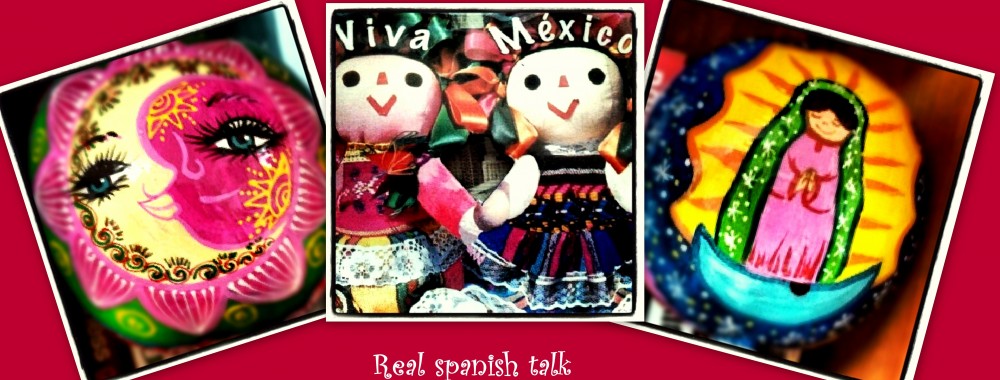Hola, me llamo…
Video
This is the first part of “introduce yourself lesson” learn how to introduce yourself in Spanish.
In today lesson we are going to learn how to introduce yourself for the first time.
In Spanish we say “Hola, me llamo Melissa” This is a greeting plus your name [Hi, I call myself…]
other variation is “Hola soy Melissa” [Hi I am Melissa]
you can also say “mi nombre es Melissa” [my name is]
After your name you can say your age like “tengo 20 años” [I have 20 years]
By order of usability I put the following Spanish sentences with name + age:
“Hola, me llamo Melissa y tengo 20 años”
“Hola, soy Melissa y tengo 20 años”
“Hola, mi nombre es Melissa y tengo 20 años”
*y [and]
*20 “veinte”
For giving more information when introducing yourself you can say the country you are from “Soy de Mexico” “Soy de + your country”. In Spanish the change of saying the country you are from: I’m from Mexico “Soy de Mexico” and saying your nationality: “Soy Mexicana” [I’m Mexican] has a different grammar because you have to change the gender of your country depending on the gender of the speaker, if the speaker is male or female.
By order of usability I put the following Spanish sentences, “name + age + nationality” and “name + age + nationality + country”
“Hola, me llamo Melissa, tengo 20 años y soy mexicana” “Hola, me llamo Melissa, tengo 20 años y soy de México”
“Hola, soy Melissa, tengo 20 años y soy mexicana” “Hola, soy Melissa, tengo 20 años y soy de México”
“Hola, mi nombre es Melissa, tengo 20 años y soy mexicana” “Hola, mi nombre es Melissa, tengo 20 años y soy de México”
In the next video I will teach you how to work with genders. But for now just few examples:
Girl: Soy coreana [I’m Korean]
Boy: Soy coreano [I’m Korean]
Girl: Soy china [I’m Chinese]
Boy: Soy chino [I’m Chinese]
Girl: Soy rusa [I’m Russian]
Boy: Soy ruso [I’m Russian]
Girl: Soy italiana [I’m Italian]
Boy: Soy italiano [I’m Italian]
*Please notice that female nationalities have the vocal a at the end and that masculine nationalities have the vocal o at the end. That is the basic difference between feminine and masculine.
I hope you enjoy the first part of introductions. See you in the next video.
Buenas tardes y Buenas noches
This is the second part of the formal greetings… Buenas tardes / Buenas noches
In Spanish we have different ways to greet in a formal way depending on the time of the day, this is morning, afternoon and evening. In the morning we would say “Buenos días” in the afternoon we would say “buenas tardes” in the evening we would say “buenas noches”.
In the afternoon we greet people by saying “buenas tardes” for example when you arrive to a meeting at your company in the afternoon you greet by saying “buenas tardes”, when a costumer arrives at a business the employees greet them saying “buenas tardes”.
At night we use the expression “buenas noches” you can say Hello and good bye with this same expression “buenas noches”. We say “buenas noches” not only at the beginning of a situation but you can use “buenas noches” as a way of saying also good bye, for example if at night you are talking with someone on the phone you say good bye like “buenas noches” or when you are in a formal place environment you can say hello and good bye with this same sentence “buenas noches”.
Other situation where we say “buenas noches” is before going to sleep the translation in English for this would be: have a good sleep. If you are leaving your friend house at night you can say “Buenas noches” so, remember we use “buenas noches” meaning hello, good bye and good night.
You can also use these expressions for getting the attention of people you don’t know, for example if you are kind of lost in the street and need directions you can ask someone around there and in order to get their attention you can say “Buenos días, buenas tardes or buenas noches” depending on the time of the day.
Buenos días masculine and plural
Buenas tardes feminine and plural
Buenas noches feminine and plural
InterPals.Net : realspanishtalk’s profile
Buenos días
Buenos días, buenas tardes, buenas noches
This is the first part of the formal and very common greetings in Spanish.
In Spanish we have different ways to greet in a formal way depending on the time of the day.
In the morning we would say “Buenos días”, the translation in English would be “god morning”
for example when you go out of your house in the morning you greet your neighbors by saying “Buenos días”, or when you meet your teacher at school you say “Buenos días”, in your work place you greet coworkers saying “Buenos días”, when you wake up in the morning you greet your family saying “Buenos días”.
This is the first part of the formal greetings the second part will be buenas tardes & buenas noches. See you soon
Hola! Spanish lesson No1
A casual and common greeting in Spanish.
In this video you are going to learn about a casual greeting that we can use in real life in spanish native speaking countries.
“Hola, ¿cómo estás?”
Hola = Hi
¿cómo estás? = How are you?
Muy bien = Very good
Bien = good
Muy = Very
y tu? = and you?/ what about you?
Muy bien tambien = Very good too
tambien = too/ also
Spanish Grammar English
Hola Noun Hi
¿cómo? Particle question How
Estás Verb( Estar) To be
Muy Adverb Very
Bien Adjective Good
Y Conjunction And
tu Personal pronoun You
También Confirmation to an affirmative sentence Too / Also / as well

